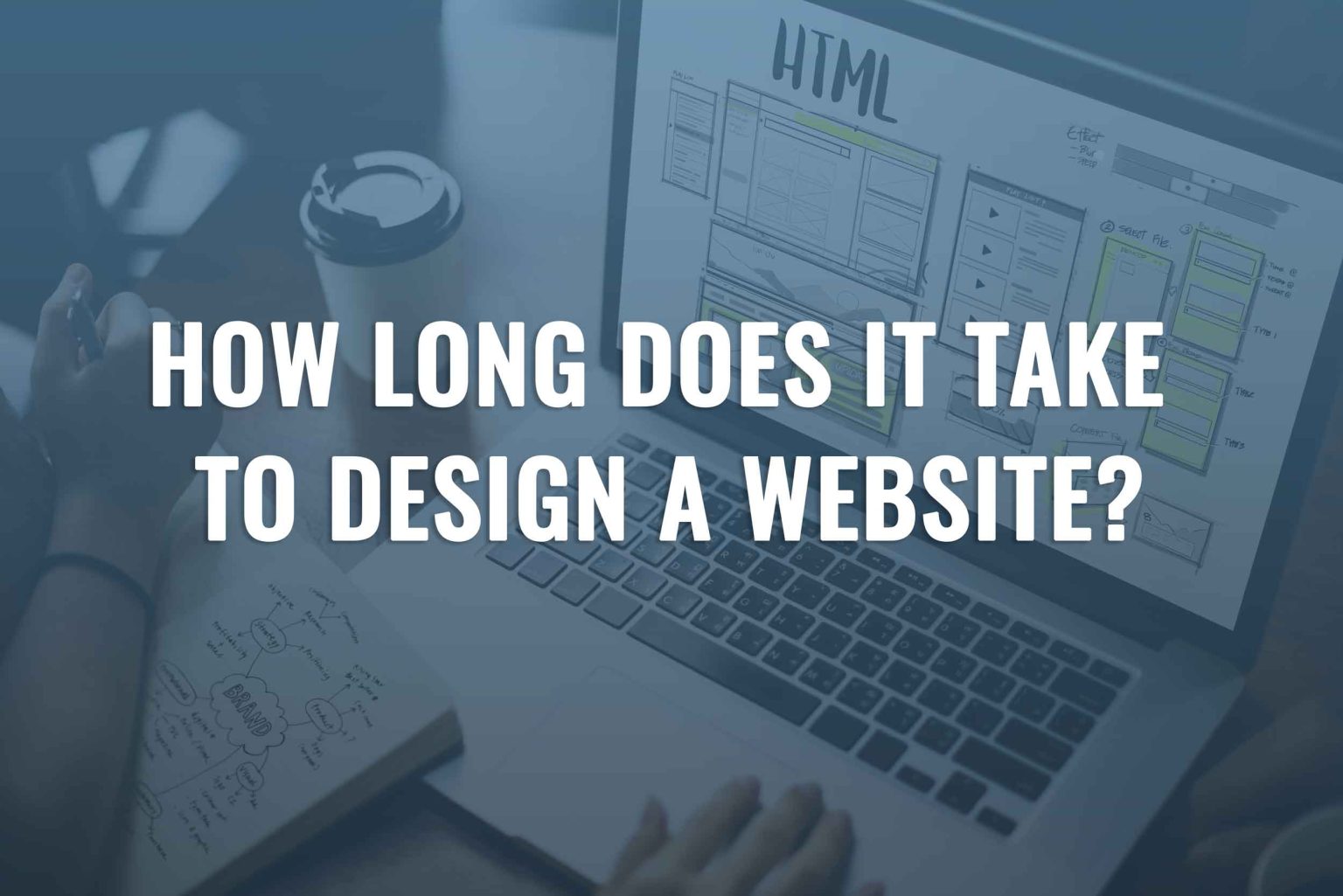MON - FRI: 9:00 to 7:00 EST

How long does it take to design a website?
Initial Thought:
Some say building a small business website typically takes 30-60 days.
Reality Check:
Thinking it takes that long might mean you’re not talking to the right pros. A top-notch team should be able to dazzle you with a custom design in 3 weeks, tops. Realistically, a small business site should be ready to roll in 2 weeks, given everything runs smoothly with the client’s input.
What Really Affects the Finish Line for Your Site?
It’s a myth that the number of pages dictates how long it takes to get your website live. Sure, more pages mean more work, but what really sets the pace is nailing down the right strategy. What’s the goal of your site? Figuring this out helps us pinpoint exactly what we need to make your site tick.
This strategy part? It covers everything from the user interface (that’s UI/UX for short), your brand vibe, getting your site seen (SEO), and how you’ll reach your audience (marketing and support). Say you’re not into pay-per-click (PPC) ads; maybe you don’t need to double down on SEO. Or if fancy branding isn’t your priority, we can keep the design straightforward. Your strategy can seriously speed up or slow down the making of your website.
And Then There’s Content…
Content is key, but it comes after strategy. It’s all about the ‘what’ first, then the ‘how.’ Content isn’t just filler; it’s crucial for showing what you’re all about. But let’s be clear – there’s generic content, and then there’s the stuff that makes you stand out, like specific images, details on warranties, pricing, customer service, and special offers.
The Real Game Changer: Working Together
The biggest hurdle? Teamwork with clients. It’s complex, and boy, could we tell stories. But any seasoned web development team or project manager worth their salt knows how to smooth out these bumps.
How many hours does it take to build a custom website?
Unless you are using WordPress or some cheap website builder, every website by essence is a custom website. At WebmastersDesktop, we code all of our designs from scratch. Over the years we have developed a sort of libraries to help expedite the process. A simple website is completed within 2 weeks while complex designs may extend to 30 days.
Is a website redesign quicker than building a new website?
The concept of a website redesign as a faster, budget-friendly option is somewhat misleading. Many believe that starting with an existing design will cut down on work and, therefore, cost. However, this isn’t typically the case. While having existing content might save some time, the design process often starts anew. Older sites usually feature low-resolution images that don’t meet today’s standards for modern devices.
For websites originally built with custom designs, new developers have to closely examine the existing setup before making any modifications. This review process alone can be quite time-consuming, and it’s likely they’ll encounter outdated code.
Therefore, unless the planned changes are very minor, designing a new website from the ground up is generally the faster approach.
How much does it cost to hire someone to build my website?
The range of $2,000 to $20,000 for building a small business website might sound broad, but let’s cut through the noise. It’s essential to know that the heart of your website’s cost lies in its functionality and the complexity of its design, rather than just the number of pages it boasts. A straightforward site with a few pages might indeed be on the lower end of the cost spectrum.
Now, here’s something critical to understand: most genuine, quality websites for small businesses don’t need to break the $12,000 mark. If you’re getting quotes that are soaring way above this, it might be time to hit the brakes and reassess. While it’s true that custom features and intricate designs can increase costs, claims that you need to spend more than $12,000 could be red flags for overcharging. In the vast world of web design, transparency and value should be your guiding stars, steering clear of anyone who insists otherwise.
What goes into building a custom website?
Building a custom website or undertaking a redesign is a nuanced process that requires expertise, not just enthusiasm. Here’s how it really should unfold, with a project manager steering the ship to ensure not just a beautiful site, but one that’s primed for performance and ranking:
Step 1 – Strategic Planning
Forget starting with aesthetics. The first step is a deep dive into strategy, led by your project manager. They’ll analyze your business goals, target audience, and competitive landscape. This phase culminates in a detailed plan that outlines the site’s structure (sitemap) and technical requirements. Your input on preferences and desired features is crucial, but it’s the project manager who translates this into a viable, strategic vision.
Step 2 – Design with Purpose
Here, design meets strategy. The project manager oversees the creation of your website’s homepage and a key sub-page, integrating your vision with best practices for user experience (UX) and conversion rate optimization (CRO). You’re involved in providing feedback, but it’s the project manager who guides the revisions, ensuring the design aligns with both your brand and performance goals. Once the design is solidified, the expansion to additional pages isn’t just aesthetic but functional and strategic.
Step 3 – Development and Optimization
The merging of design with content is a critical stage, overseen by the project manager to ensure harmony between visuals and verbiage. While you’re refining the final content, the technical development progresses, with a keen focus on responsive design and foundational SEO practices. It’s a collaborative effort, but the project manager ensures that the site’s build not only looks good but is structured for search engines from the ground up.
Step 4 – Launch and Quality Assurance
Launching a website isn’t just about flipping a switch. The project manager orchestrates a thorough pre-launch review, including user testing and a comprehensive SEO checklist. Your final inputs are important, but the project manager ensures that every element is scrutinized, optimized, and ready for the digital world.
In this model, the project manager’s expertise is not about sidelining the client but ensuring that the website isn’t just a digital presence but a strategic tool for growth, built on a foundation that understands and leverages the intricacies of web ranking and user engagement.








